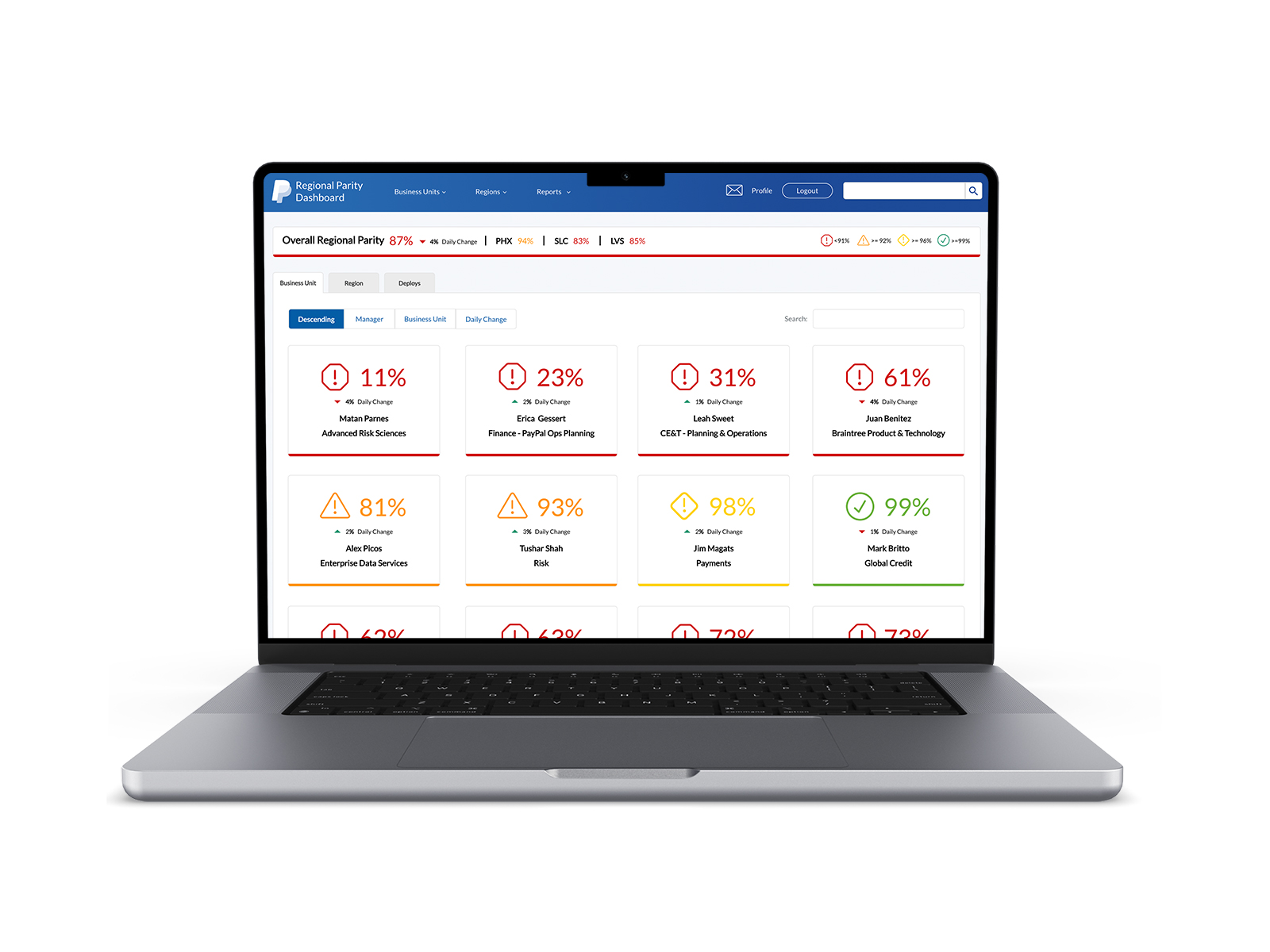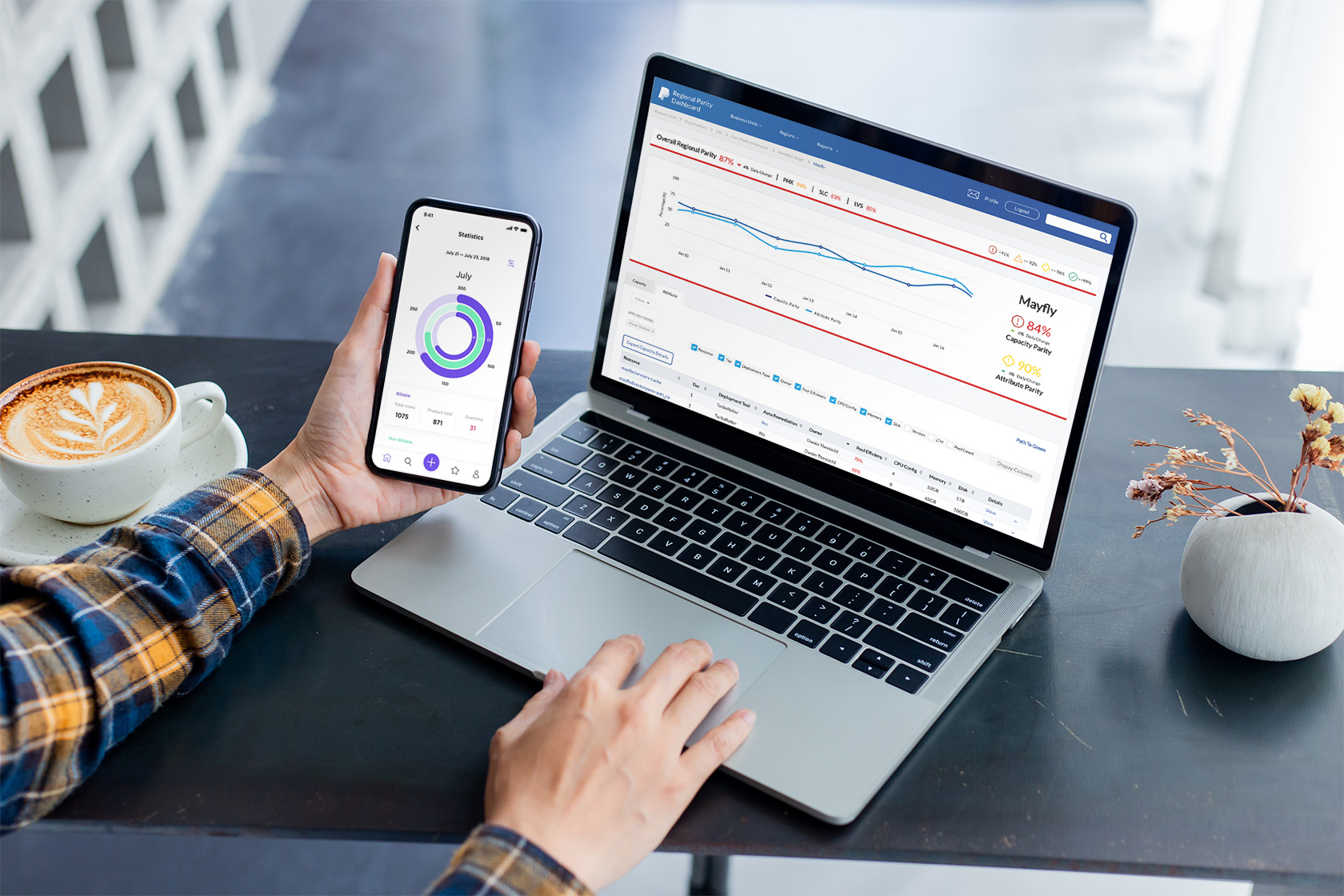Company: PayPal | Technology Platforms & Experiences
Role: UX/UI design; Data Architecture; Data Visualization Design
Resources: UXPin; HighCharts Photoshop; Illustrator

The engineering team and engineering leadership at PayPal needed a solution to help ensure the parity of all of the infrastructure across their multiple data centers across the globe were always in synch. Without the PayPal infrastructure being in parity, PayPal’s customers, merchants and developers would not be able to effectively utilize the product suite PayPal offers to its customers.
I helped partner with senior product leaders in the Technology & Platform Experiences (TPX) team to identify the various needs from the enterprise team, as well as PayPal’s business partners to define the product requirements. I was also tasked with utilizing this effort to further the efforts to bring the TPX enterprise team closer to a standardized design system.

Technical Direction
The data and architecture of PayPal’s network was very complex, which created a set of unique challenges when designing the various reports and dashboards. I utilized design thinking to ensure all user journeys were identified, all data elements and variables were complete and accurate. This helped ensure that the reports and dashboards the product would illustrate were accurate, engaging and reliable. I also implemented a new paradigm for doing filtering and sorting at various levels of the data layer. This was done to ensure the users would be able to gain access to the reports and data easily and quickly.

User Research
To further understand the challenges the business stakeholders were having, and where the challenges were in accessing this important data, I lead several research studies. First, I worked closely with the User Experience Research team to formulate a strategy on the user surveys we would conduct and how we would convert the findings into impactful customer insights. I also identified a few key power users of similar reporting products to better understand their unique needs and how the findings from similar dashboards were used to help make key planning and engineering decisions. I performed multiple field studies, where I had users follow specific tasks along their user journey to complete the work they needed to get the pertinent information.
The findings from this research and other efforts helped shape the focus of how the user experience would function. These findings helped guide the key decisions on how to make it easier for the user to sort through the layers of information to get the critical data they needed. This in turn helped ensure the effectiveness of the Parity Dashboard met the needs of the stakeholders and business users.
The Results
Although this product never got past the Alpha phase, there were dozens of key insights and wisdom gained from leading the effort to build a powerful and complex data reporting product. Some of the insights gained led to being the wisdom used when drafting the new Design Operations model that was adopted by PayPal. Other insights proved very valuable during the research and analysis I led to determine the best options to implement an enterprise level design system for Technology Platforms & Experiences.
The lessons learned during the research and discovery phase of the project allowed us to find several key components to make up the Design Operation model. This also led me to become the subject matter expert for data visualization and design that would be adopted across all of Technology Platforms & Experiences at PayPal.






